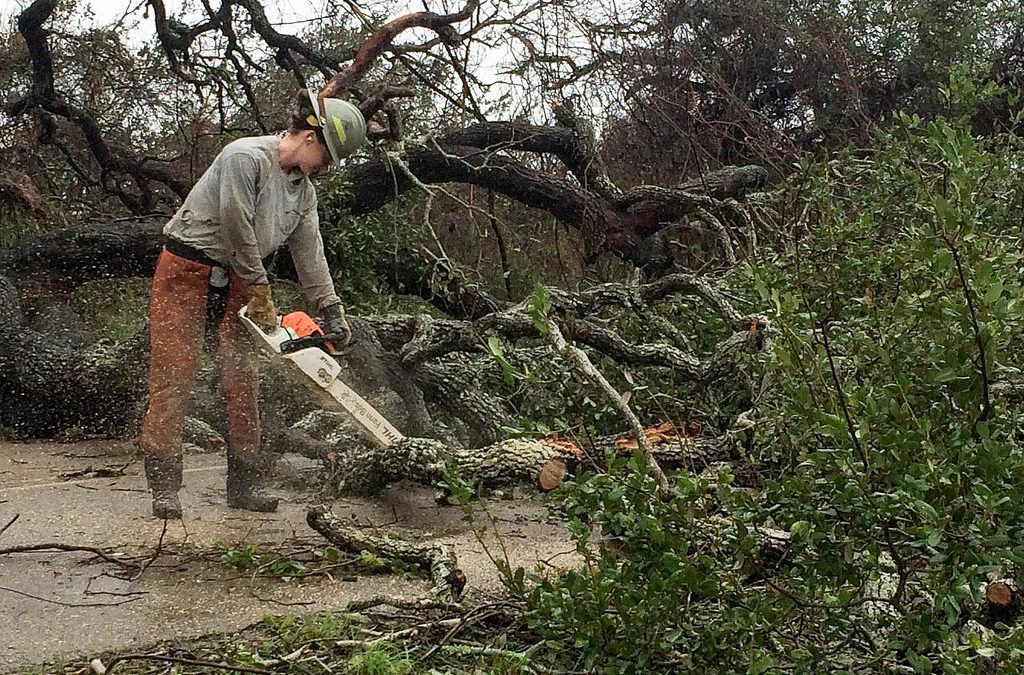End of summer and fall are periods when certain regions of the United States see an increase in extreme weather events, including hurricanes, flooding, and tornados. For workers, clean up after one of these natural disasters can be an extremely dangerous on-the-job responsibility because of the variety of hazards they potentially come in contact with.
Employers can protect their workforce by assessing possible dangers and providing work crews with the appropriate personal protective equipment, training, and information to safely participate in recovery efforts.
Hazards & Safety
Here are some of the potential hazards that workers encounter after natural disasters and OSHA’s tips for protective measures:
Contaminated flood waters
Flood waters can carry bacteria and infectious organisms from sewage as well as toxins from flooded industrial and waste sites. Safe cleanup recommendations include:
• Keeping cleanup areas well ventilated.
• Only allowing trained workers to clean up toxins and mold.
• Ensuring that workers are up to date with tetanus shots.
• Providing waterproof boots, latex or rubber gloves, goggles and chemical resistant outer clothing.
• Having N-95 NIOSH approved respirators for workers who come in contact with mold.
Downed power lines
Workers risk electrocution and burns from contact with energized power lines. Employers must:
• Have a 10-foot safety perimeter around downed power lines.
• Only allow properly trained workers to repair electrical wires.
Falling/fallen tree limbs
Crews working in disaster zones run the risk of being crushed by falling limbs, suffering serious injuries from equipment such as chainsaws, being electrocuted by live wires tangled in fallen tree limbs, and suffering strain injuries from trying to lift heavy debris. Workers must:
• Be alert of their surroundings and stay at least 10-feet away from danger zones with live wires or falling tree limbs.
• Use work gloves, a hard hat, work boots, hearing protection and eye/face protection and wear chaps when using a chainsaw.
• Be properly trained to safely use equipment such as chippers and chainsaws.
• Use mechanical equipment or bring in extra help to lift heavy objects.
Fall hazards
After a natural disaster, surfaces can be wet, slippery, and covered with debris. Safety measures include:
- Making safety equipment such as harnesses or restraining belts available to workers using aerial lifts.
- Ensuring that ladder safety procedures are followed such as maintaining three-point contact with the ground and not allowing workers to stand on the top rung.
- Staying alert to the surroundings and potential hazards.
Hazardous driving conditions
Workers doing cleanup near roads must:
• Wear high-visibility clothing and headwear compliant with ANSI/ISEA 107-2004,
• Use proper traffic controls (i.e., signs, cones, barriers),
• Use proper lighting, flaggers and worksite communications.
Vehicle operators must:
• Be properly trained
• Always use seat belts and rollover protection
Portable generator dangers
Power outages will slow down or delay cleanup after a weather event and portable generators can be huge help in getting started. They, however, also carry risks. To safely use generators, workers must:
• Never run them inside a house or in an enclosed space like a garage, only in well-ventilated areas.
• Inspect electric cords to ensure they are in good condition and free of defects. Use a ground-fault circuit interrupter (GFCI).
• Shut down generators before refueling.
OSHA has numerous helpful resources dealing with worker safety during and after natural disasters. To learn more visit www.osha.gov.

